This post may contain affiliate links. Please read our disclosure policy.
This vegetable rice pilaf (aka yellow turmeric rice) is packed with mixed vegetables and a combination of aromatics and spices for a truly flavorful (and colorful), versatile side dish! This simple Middle Eastern-inspired rice and vegetable side is fluffy and flavorful, gluten-free, vegan, and ready in under 40 minutes!
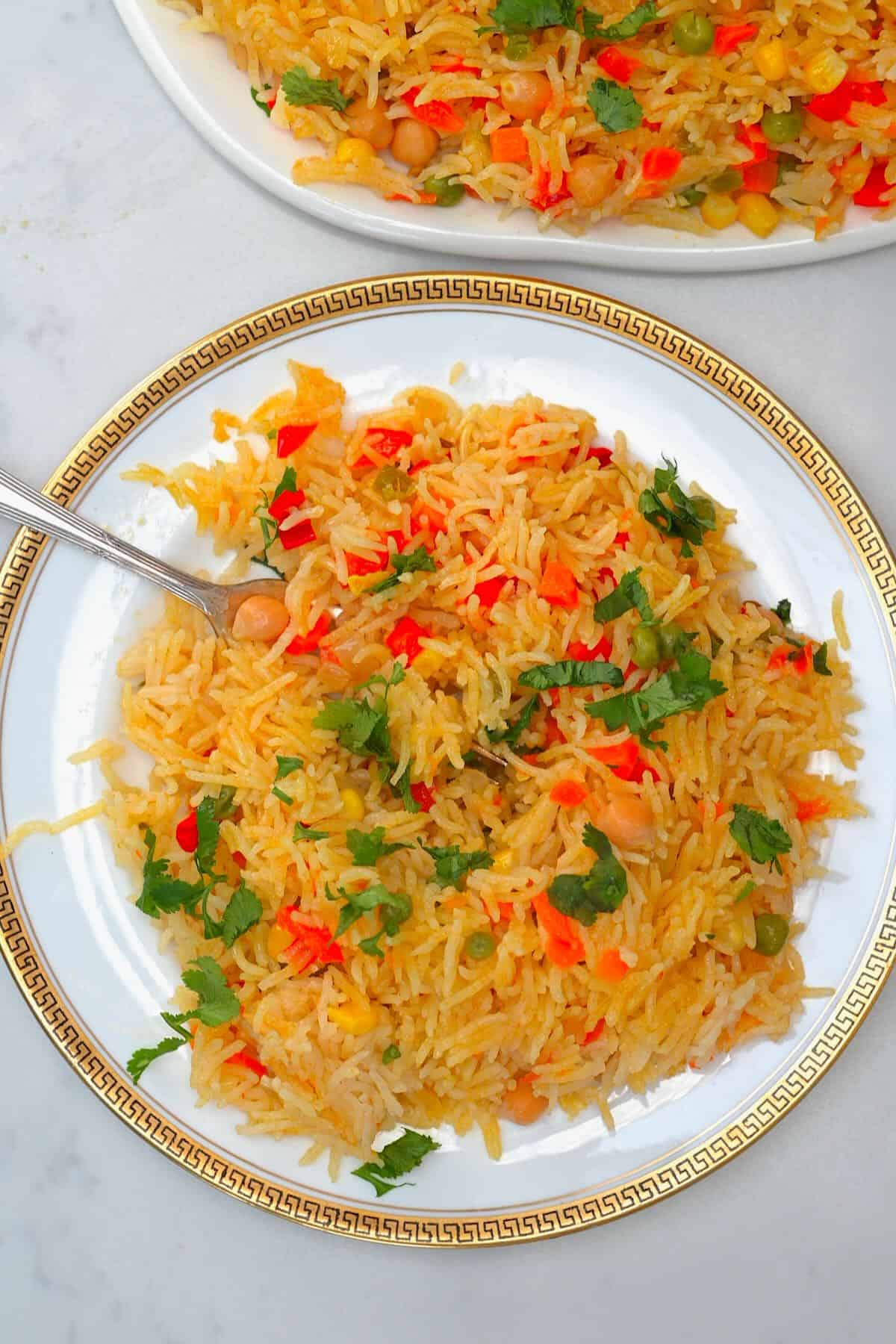
I’m a firm believer in having several go-to side dishes you can pull out whenever the mood strikes. When it comes to rice, I’ve already shared the basic methods for cooking jasmine rice, brown rice, and vermicelli rice. However, for those who find rice “boring,” it’s time to introduce you to this easy one-pot vegetable rice pilaf (aka turmeric rice with vegetables)!
This one-pan vegan pilaf combines the general aromatics (garlic, onion, and ginger) with several Middle Eastern spices and tons of veggies to make the ultimate versatile side dish. Even better, though, you can adapt it to be as simple or complex as you’d like by how many add-ins you choose to use. Luckily, even the most basic version will be a family favorite (and 1000% better than any boxed or packaged version of similar dishes!).
Not only is this vegetable rice pilaf a great way to pack in tons of veggies to any meal, but as you can choose which to add, you can easily adapt it to suit the entire family. In this version, the addition of chickpeas helps to add extra fiber and protein, keeping you satisfied for longer and making this recipe easily double up as a nutritional side or hearty vegetarian main. Best of all, this recipe is easily scalable and freezer-friendly too!
Want to save this recipe?
Table of Contents
- What is Rice Pilaf?
- Vegetable Rice Pilaf Ingredients
- How to Make Vegetable Rice Pilaf (Turmeric Rice with Vegetables)?
- How to Serve with Vegetable Rice Pilaf?
- How to Store Veggie Pilaf?
- FAQs
- Recipe Tips and Notes
- More Middle Eastern Side Dishes
- Easy Vegetable Rice Pilaf (Yellow Turmeric Rice | Vegan) Recipe
What is Rice Pilaf?
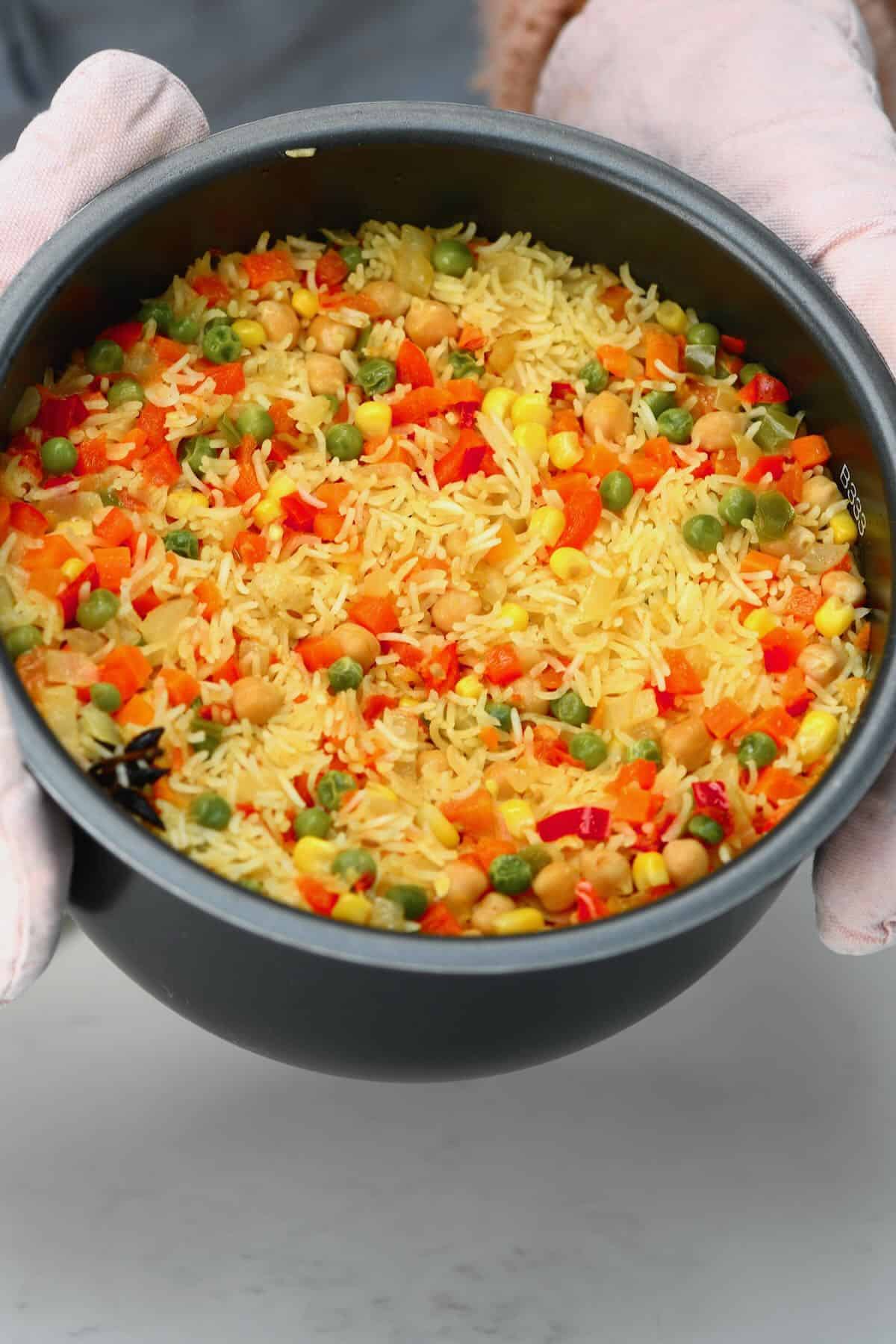
Pilaf, also called Pilau, pilav, and pulao, among several other names (there are many!), refers to a rice dish, both in the method used for cooking and for calling the final product. Unlike regular rice cooked in water/stock, pilaf cooks the rice as a one-pan meal with several aromatics, spices, and broth/stock for a truly flavorful yet still wonderfully fluffy side dish.
For this vegan rice pilaf version, we’re making Middle Eastern-inspired mixed vegetable rice pilaf with a combination of several vegetables, aromatics, spices, chilies, and turmeric for a gorgeous golden yellow basmati rice. With the addition of chickpeas, this rice not only works as a nutritional side but doubles up as a hearty vegetarian main too!
Looking for more flavorful rice dishes? You might also enjoy this cilantro lime rice, Persian basmati dill rice, breakfast fried rice, kimchi fried rice, and maqluba (upside-down layered rice)!
Vegetable Rice Pilaf Ingredients
- Basmati rice: you could also use jasmine rice or another long-grain white rice, though the cooking time may vary. I haven’t tried brown rice, as both the time and amount of liquid will change.
- Water: to cook the rice. You’ll need one cup of water per cup of rice used. For extra flavor, you can use reduced-sodium vegetable stock (or a bouillon cube with the water).
- Olive oil: or another neutral cooking oil like avocado oil. Butter/ghee would also work. This helps to sauté the vegetables AND separate the rice grains for the ideal texture.
- Vegetables: this vegan rice pilaf with vegetables is packed with tomatoes, red bell pepper, carrot, chickpeas (I used pre-cooked chickpeas, you can also use canned), peas and sweetcorn (I use frozen and thawed), and red and green chilies. Check the FAQs below for substitutions and variations.
- Aromatics: this rice pilaf uses a combination of fresh ginger, garlic, and onion for a very fragrant base. You can use the fresh ingredients, pre-prepared garlic paste and ginger paste OR (as a last resort) you could use ginger powder, garlic powder, and onion powder (adjust the amount accordingly).
- Spices: along with the aromatics, we flavor the vegetable pilaf with the addition of star anise, clove, cumin seeds, chili powder (adjust the amount to taste), turmeric powder (to make yellow basmati rice), and salt.
- To garnish: I used fresh cilantro to garnish the veggie pilaf. Alternatively, you could use some fresh parsley, mint leaves, or even chives.
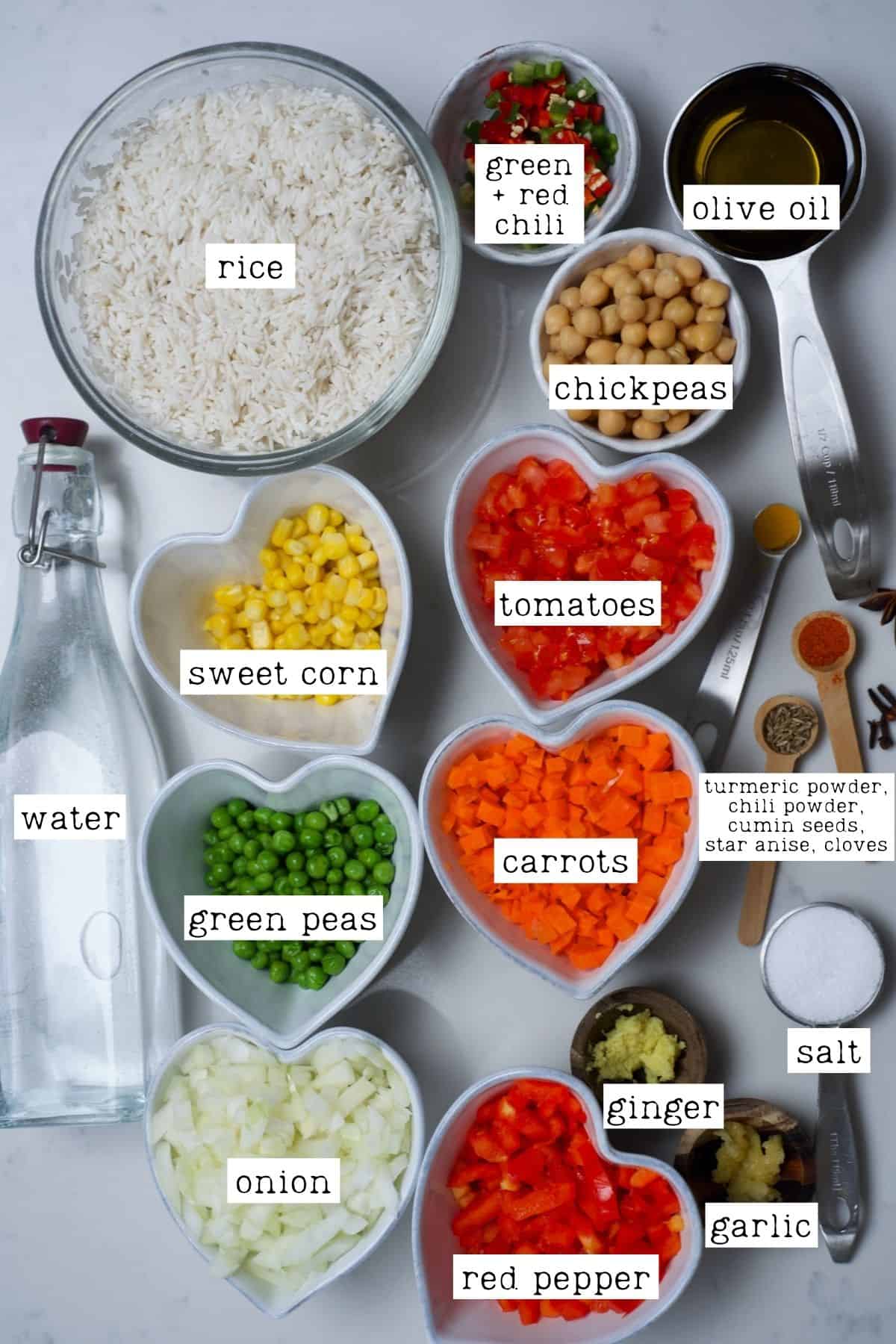
Optional Add-ins and Variations
- Black pepper: add a pinch of freshly cracked black pepper to take advantage of all the health benefits of turmeric (anti-inflammatory, immune-boosting, etc.).
- Bay leaves: add 1-2 bay leaves for extra depth of flavor. Discard before serving.
- Cinnamon: a pinch of cinnamon will add a little extra warmth to the rice pilaf.
- Other vegetables: there are several to choose from: green beans, broccoli, cauliflower, celery, leek, asparagus, mushrooms (sauteed until browned to avoid sliminess), zucchini, etc. You could also add leafy greens like spinach, stirring them in right at the end until just wilted.
- Dried fruit: you can add raisins, golden raisins (my favorite), or sultanas for little pockets of sweetness within this savory turmeric rice.
- Nuts: to add extra nutrients and crunch, you can garnish this yellow basmati rice with slithered/chopped almonds or toasted cashews. Seeds would also work like sesame seeds.
- Lemon juice: a squeeze of lemon could be added when serving the turmeric rice to brighten up the flavors.
- Yogurt: you can serve the rice with a dollop of plain yogurt.
- Simple base recipe: keep the aromatics and spices to the basics of garlic, onion, turmeric powder, and salt.
How to Make Vegetable Rice Pilaf (Turmeric Rice with Vegetables)?
This easy rice pilaf recipe requires just a few simple steps.
Step 1: The Pre-prep
First, thoroughly rinse the rice. Add it to a bowl, cover with water, and swish with your hands. Then drain and repeat this step 2-3 more times until the water runs almost clear.
Then, prepare the vegetables. Finely dice the tomatoes, carrots, and onion, and chili peppers (for a milder vegetable pilaf, remove the seeds. I left them in). Then peel and mince the garlic and ginger.
Step 2: Sauté the Ingredients
Heat the oil in a large skillet, then add the chopped onion and sauté for 1-2 minutes.
Then add the garlic, ginger, cumin, star anise, cloves, and chilies. Stir to combine and sauté for a further 2 minutes.
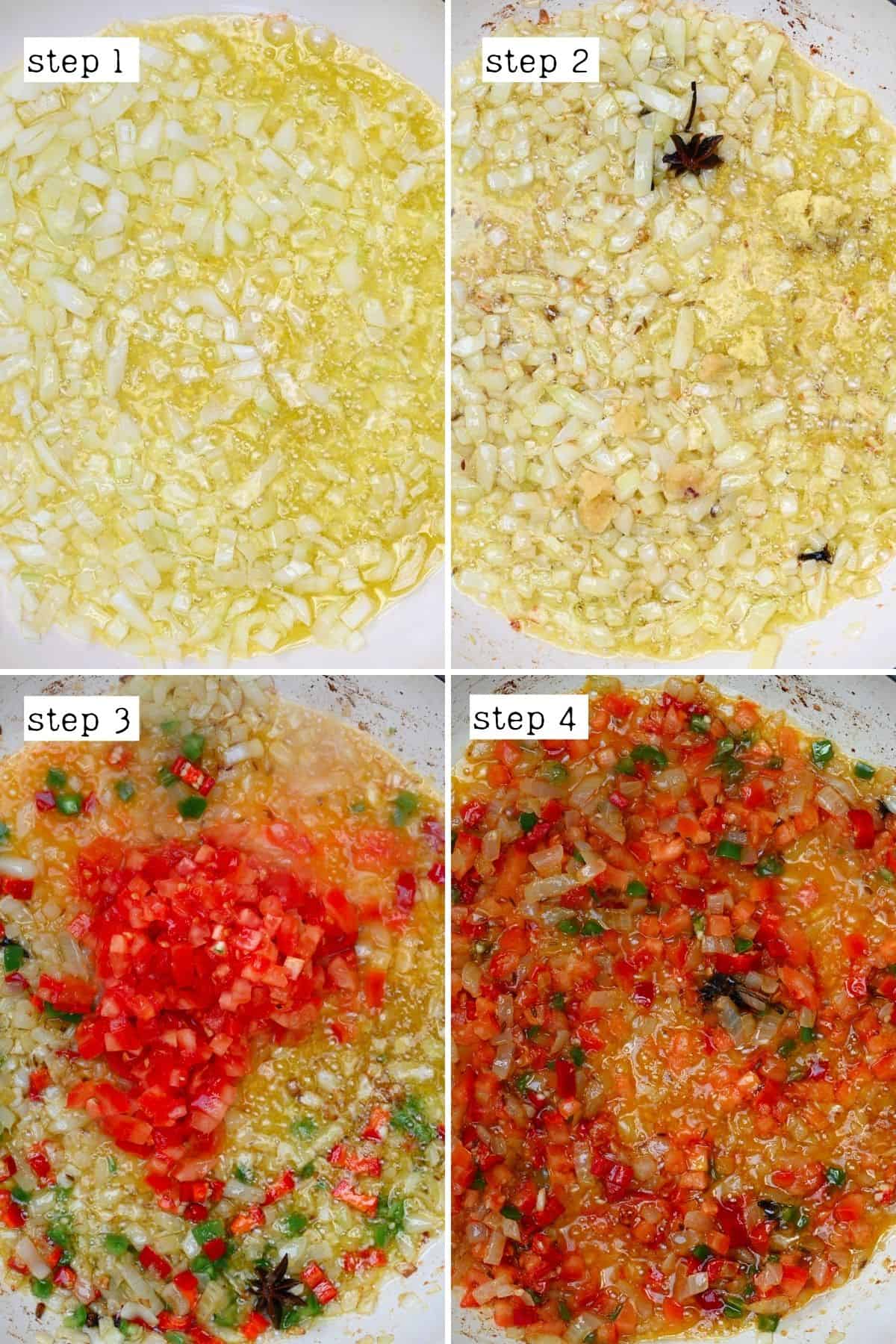
Next, add the tomatoes, salt, turmeric powder, and chili powder, and stir.
Finally, add all the vegetables to the pan and stir. Cook for a few minutes until the veggies are becoming tender.
Step 3: Add the Rice
Next, add the water and bring it to a boil. Then add the rice, stirring well.
Cover with a lid, reduce to a simmer, and cook for 12-15 minutes, or until the liquid is almost completely gone, and the rice is tender.
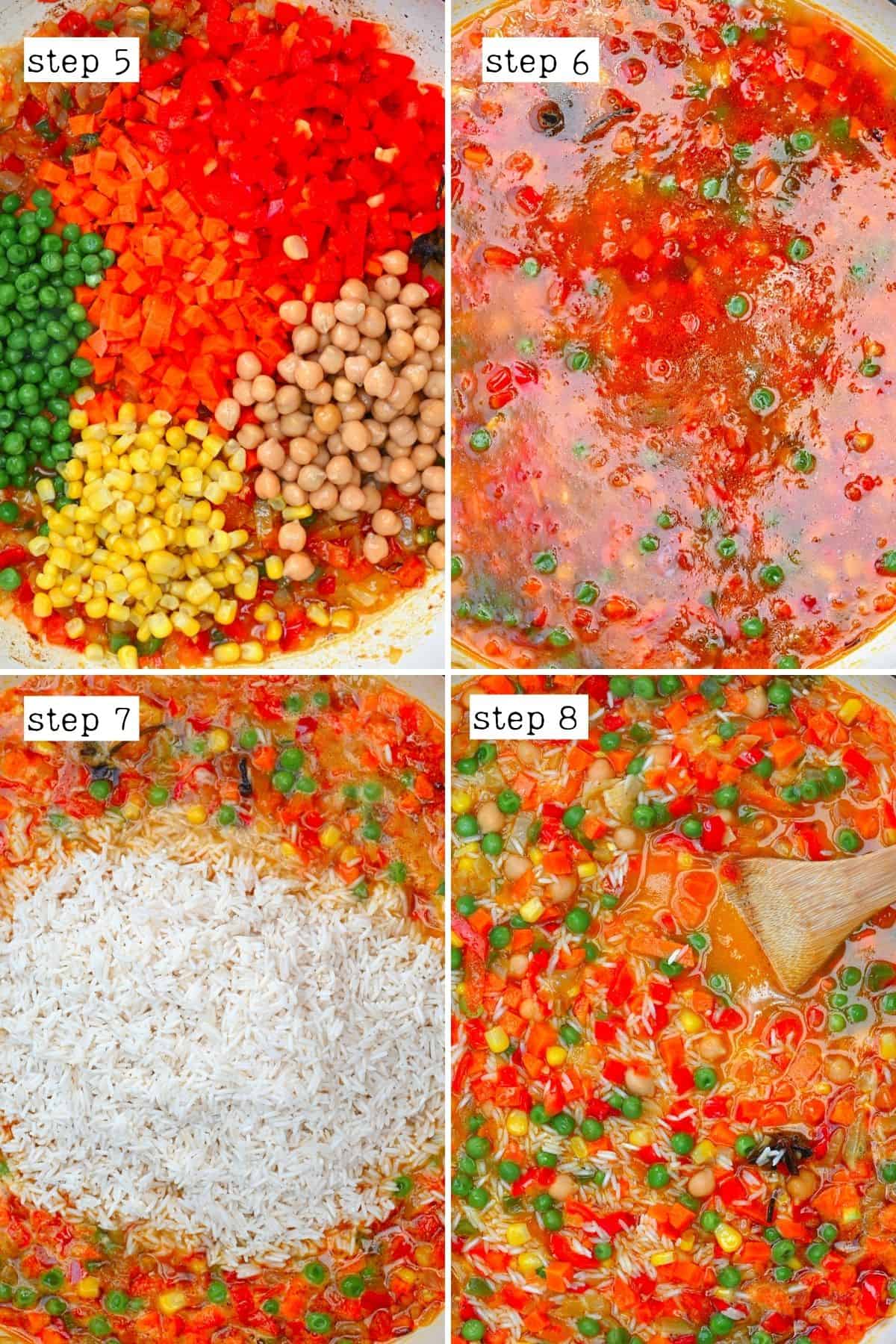
If the liquid evaporates before the rice is done, add a splash or two more. Then replace the lid, cook for a further few minutes, and then check again a few minutes later. Remember the 10 minutes of steaming time will also further cook the rice.
Then, remove the rice from the heat and allow it to steam with the lid on for a further 10 minutes. Finally, use a fork to gently fluff up the rice. Then serve the vegetarian rice pilaf with your dishes of choice!
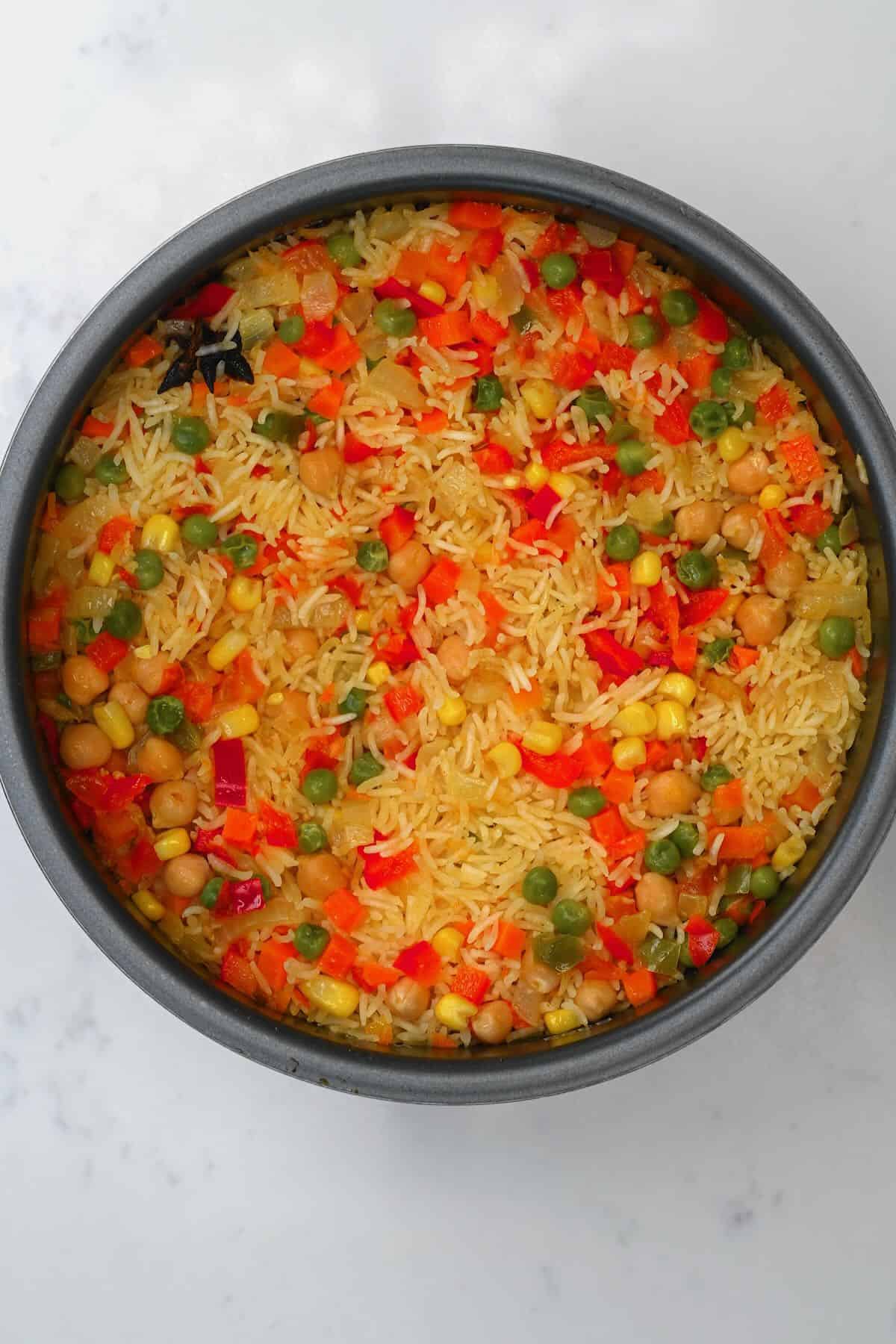
How to Serve with Vegetable Rice Pilaf?
You can serve the vegetable pilaf rice as either a side dish or a hearty vegetarian main (in fact, it’s vegan pilaf!). Here are some potential dishes you could enjoy with the rice:
- Serve the veggie rice pilaf with flatbread like naan, manakish, or pita bread.
- Molokhia with chicken (braised spinach dish).
- Middle eastern chicken shish tawook or Lebanese lamb kofta.
- Salmon (grilled or baked salmon).
- Alongside chicken shawarma or mushroom shawarma wrap.
- Marinated tempeh/tofu if you want a vegan pilaf meal.
- Alongside stews like bazella w riz (carrot and pea stew), fasolia (butter bean stew), green bean stew, and bamya (okra stew).
- Crispy vegetable fritters or zucchini fritters or vegetarian stuffed carrots.
- Garlic sauteed spinach.
- Tahini cauliflower wings.
- Healthy baked falafel.
- Curry dishes, like chana masala.
You can also enjoy it with a simple side salad or make it part of a buddha bowl.
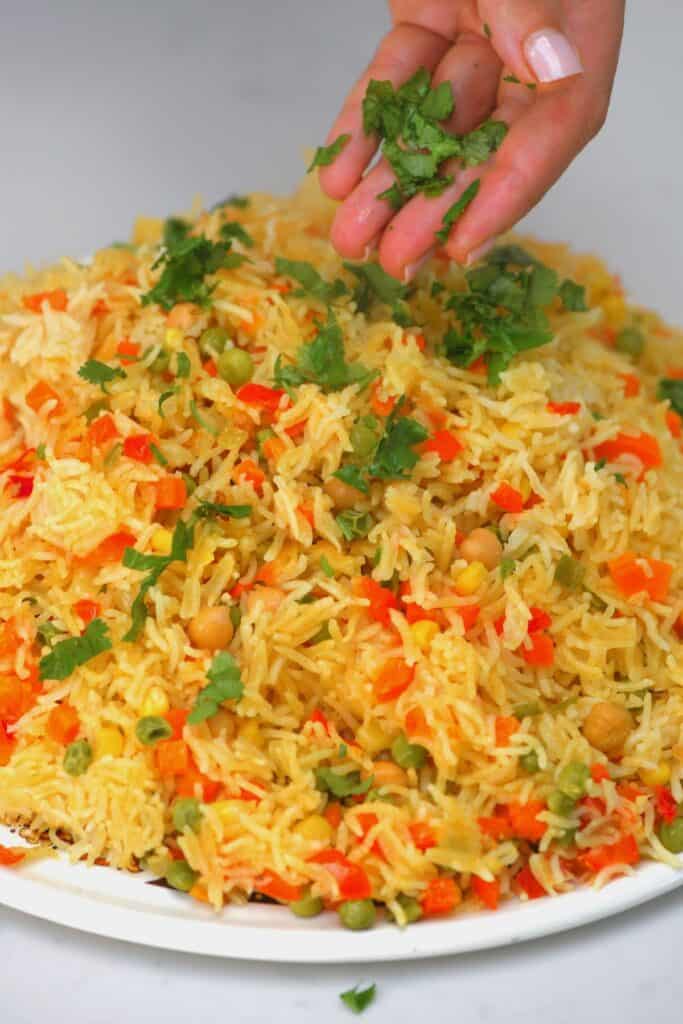
How to Store Veggie Pilaf?
Store: allow the vegetable turmeric rice to cool and then store in an airtight container in the fridge for up to three days.
Freeze: transfer the cooled soup to an airtight container or Ziplock bags (portioned, with headspace) and freeze for up to 3 months. Allow it to thaw overnight in the refrigerator (or defrost in the microwave) before reheating.
Reheat: you can use a microwave (usually 60-90 seconds) or the stovetop (a few minutes) to reheat the vegetarian rice pilaf. I recommend adding a splash of extra water or broth to the rice as it will have dried out slightly. Cook over low heat, with a lid, until heated through.
FAQs
Absolutely. This vegetable rice pilaf recipe is super versatile and is a great way to use up the veggies at the back of your crisper drawer as long as they can easily be chopped down into tiny bite-sized pieces, and they’ll cook within the timeframe. You can even use a bag of frozen mixed vegetables, canned vegetables, etc.
As long as you keep the general amount of veggies the same, then the ones you use are up to you. Avoid veggies that take too long to cook, like potato and root veggies.
Brown rice will take a different cooking time AND the amount of liquid, so I can’t guarantee results. However, if you try it, let me know your recipe tweaks in the comments below.
The only time I add those types of vegetables is if I have cooked leftovers. Gently reheat the veggies separately, then stir them into the turmeric rice just before serving.
Whereas risotto is rich and creamy with a homogenous/saucy consistency, pilaf is dry and cooked in a single pot with several aromatics and veggies to pack in flavor while cooking the rice.
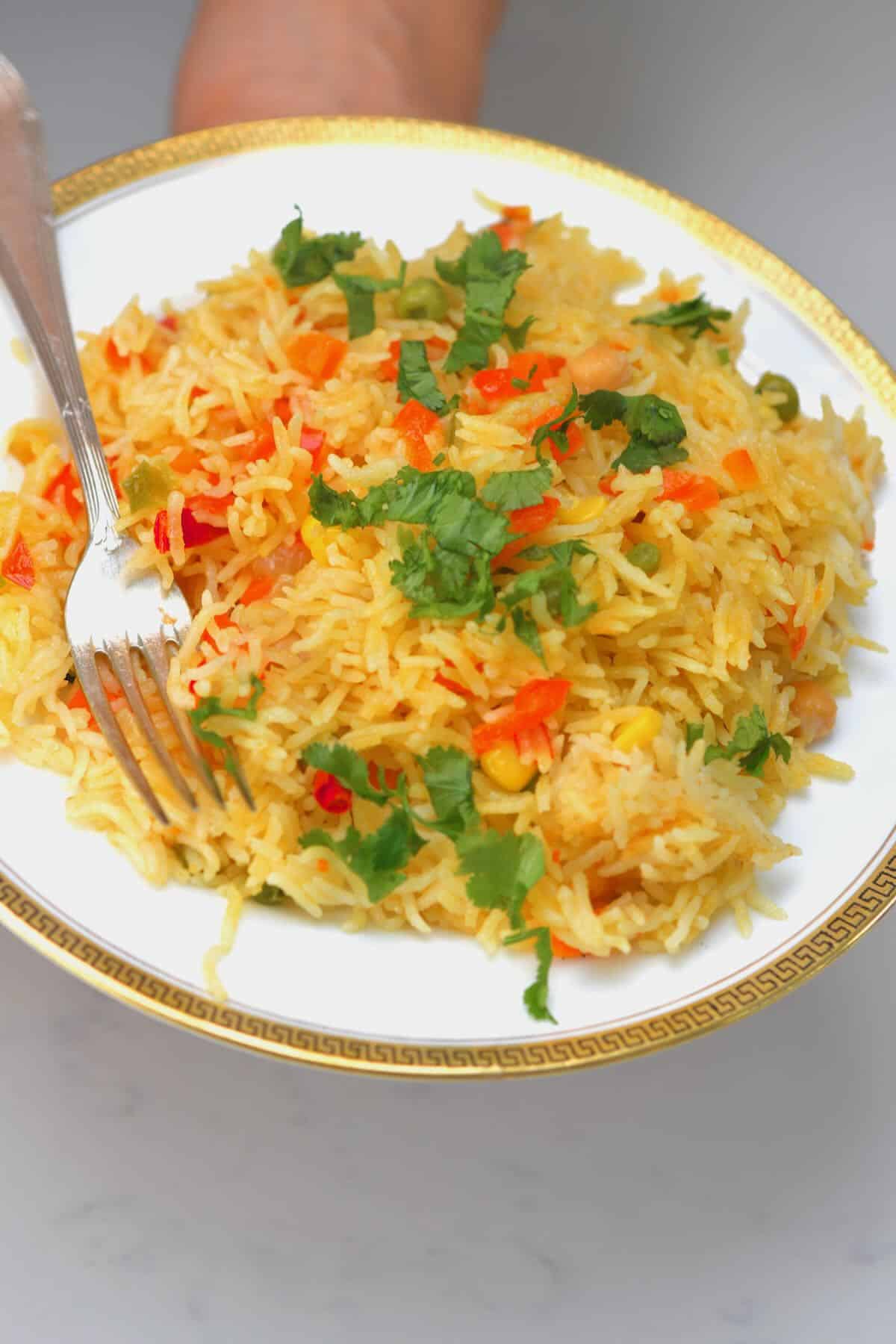
Recipe Tips and Notes
- Using frozen vegetables: if you’re mainly using frozen vegetables, it’s best to defrost them slightly first, or they may affect the time to cook the rice. If you want them to be a little firmer, mix them into the cooked rice right at the end (before the 10 minutes steam); no need to cook them at all.
- Using canned vegetables: canned vegetables are usually already very tender/mushy and cooked, so they only need to be added right at the end of the cooking process, enough to warm up.
- Save on prep time: you can use pre-packaged chopped vegetables and frozen mixed vegetable bags to cut down on chopping.
- To add extra flavor to the rice: lightly toast the rice for 4-5 minutes in the pan (until fragrant) before adding the broth. This will enhance the nutty depth of flavor in the rice.
- Make sure to rinse the rice thoroughly: if you don’t, the starches in the rice can make the rice clump up when cooked.
- Don’t skip the steaming step: this will allow the rice to soak up any remaining liquid and separate into individual grains so it isn’t sticky or stodgy.
- Don’t remove the lid until necessary: removing the lid while the rice is cooking will release all the steam and increase the cooking time. It’s best not to remove it at all until the rice has fully cooked and steamed.
- Finely dice all the vegetables: they should blend into the rice in tiny bite-sized pieces rather than be big chunks.
More Middle Eastern Side Dishes
- Lebanese lentil tabbouleh
- Stuffed Swiss chard rolls
- Balela salad (chickpea salad)
- Simple fatteh (pita chickpea yogurt salad)
- Lebanese lentil soup
- Batata harra (spicy potatoes)
- Vegetarian stuffed grape leaves
- Fattoush (pita salad)
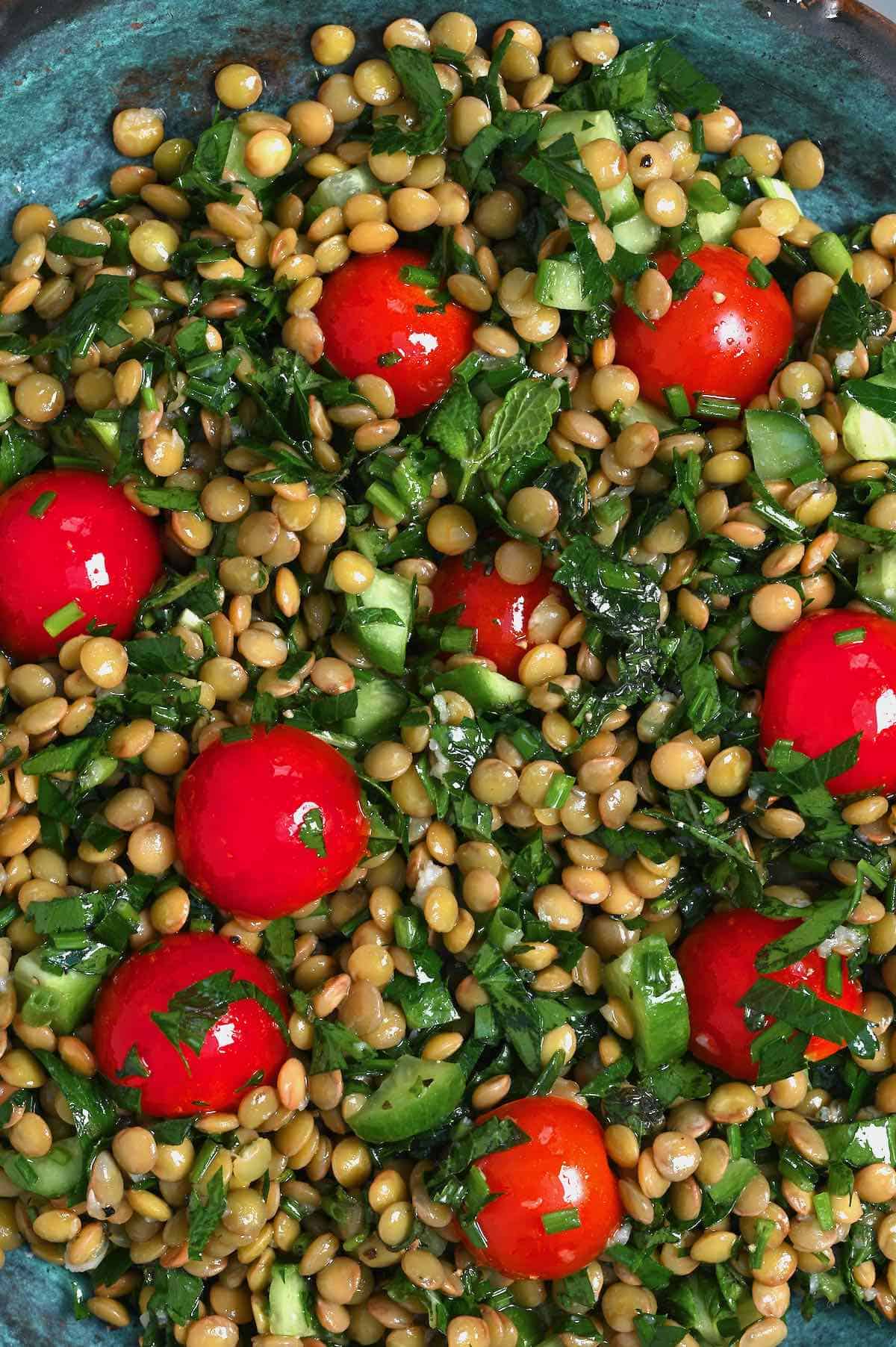
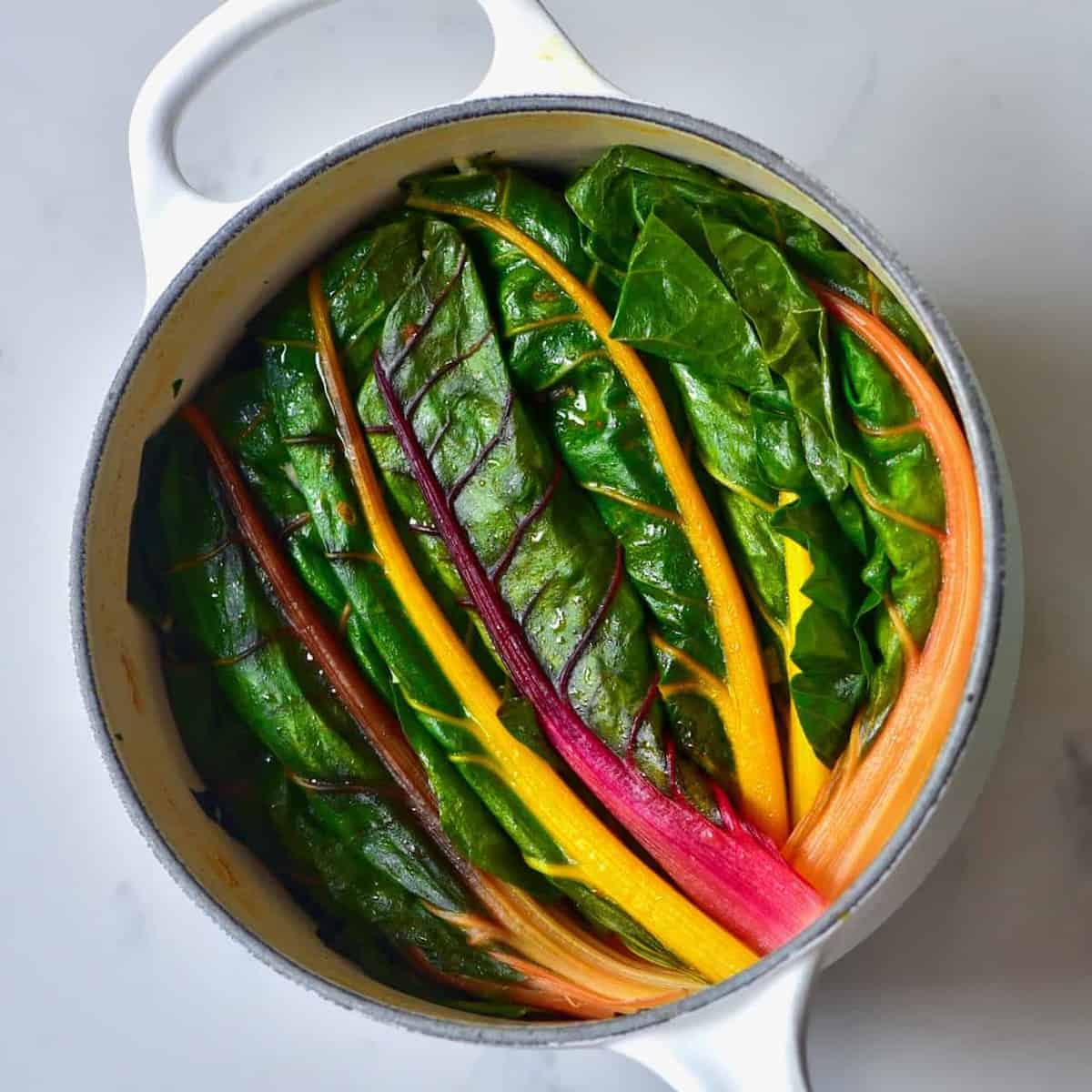
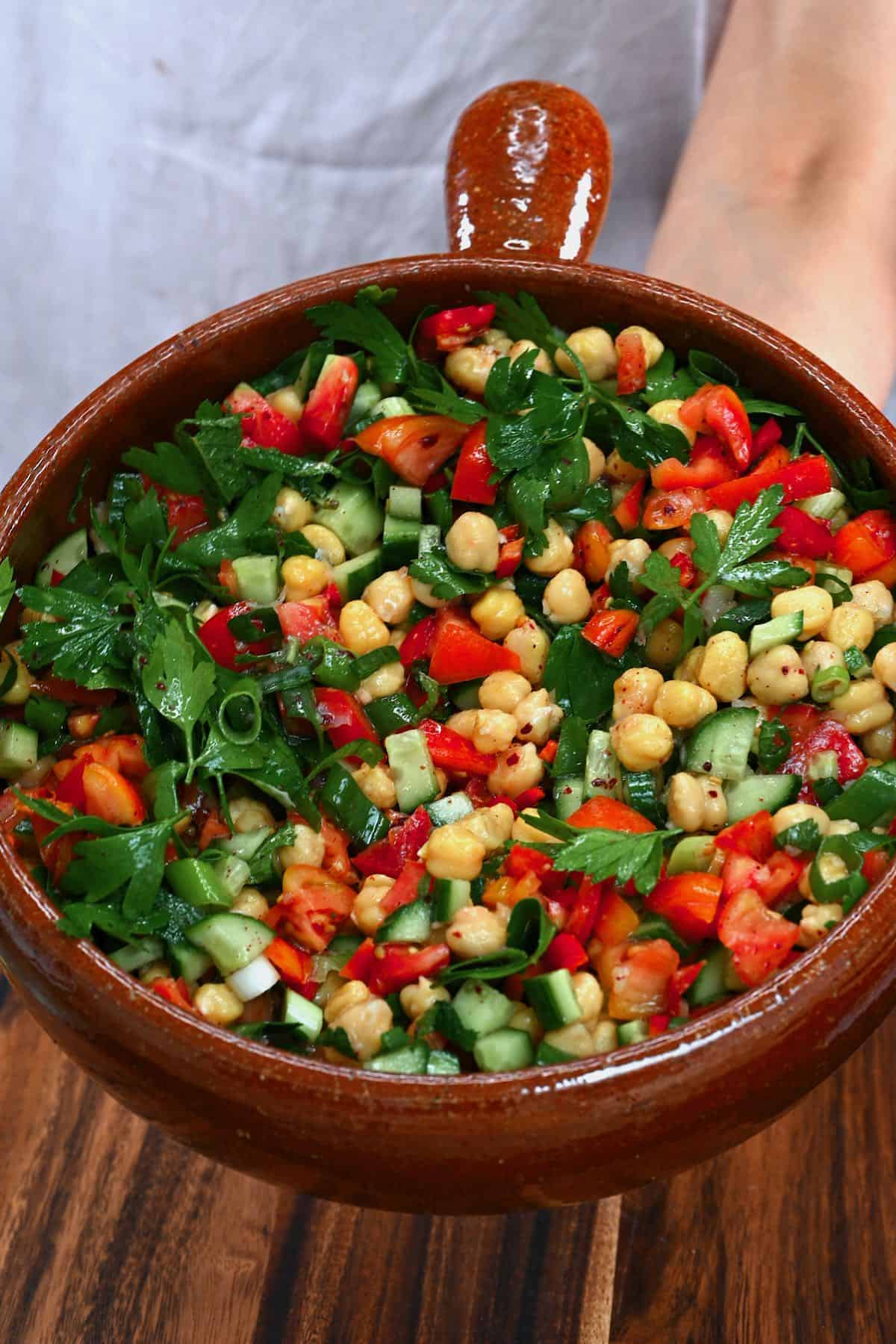
If you try this easy vegetable rice pilaf recipe (yellow turmeric rice), I’d love to hear your thoughts/questions below. Also, I’d appreciate a recipe card rating below, and tag me in your recipe recreations on Instagram @Alphafoodie!

Easy Vegetable Rice Pilaf (Yellow Turmeric Rice | Vegan)
Ingredients
- 3 cups rice basmati
- 3 cups water or vegetable stock
- 1/2 cup olive oil or butter/ghee
- 6.7 oz tomatoes 2 medium
- 5.6 oz onion 1 large
- 4 oz red pepper 1 medium
- 4 oz carrots 2 medium
- 3.3 oz chickpeas 1/2 cup
- 2.4 oz green peas 1/2 cup
- 1.8 oz sweet corn 1/2 cup
- 0.6 oz red chili 1 small
- 0.5 oz green chili 1 small
- 0.4 oz garlic 2 cloves
- 0.35 oz ginger
- 1 Tbsp salt
- 1 Star Anise
- 5 cloves 1/4 tsp
- 1/4 tsp cumin seeds
- 1/4 tsp ground turmeric powder
- 1/4 tsp chili powder adjust amount to taste
Check the Recipe Notes below for more add-ins and the main blog post for more notes on the above ingredients.
Instructions
Step 1: The Pre-prep
- Thoroughly rinse the rice. Add it to a bowl, cover with water, and swish with your hands. Then drain and repeat this step 2-3 more times until the water runs almost clear.
- Finely dice the tomatoes, carrots, and onion, and chili peppers (for a milder vegetable pilaf, remove the seeds. I left them in). Then peel and mince the garlic and ginger.
Step 2: Sauté the Ingredients
- Heat the oil in a large skillet, then add the chopped onion and sauté for 1-2 minutes.
- Add the garlic, ginger, cumin, star anise, cloves, and chilies. Stir to combine and sauté for a further 2 minutes.
- Add the tomatoes, salt, turmeric powder, and chili powder, and stir.
- Finally, add all the vegetables to the pan and stir, cooking for a few minutes until the veggies are becoming tender.
Step 3: Add the Rice
- Add the water and bring it to a boil. Then add the rice, stirring well.
- Cover with a lid, reduce to a simmer, and cook for 12-15 minutes, or until the liquid is almost completely gone, and the rice is tender.If the liquid evaporates before the rice is done, add a splash or two more, replace the lid, cook for a further few minutes, and then check again a few minutes later. Remember the 10 minutes of steaming time will also further cook the rice.
- Remove the rice from the heat and allow it to steam with the lid on for a further 10 minutes. Finally, use a fork to gently fluff up the rice, and then serve the vegetarian rice pilaf with your dishes of choice!
How to Store Veggie Pilaf?
- Store: allow the vegetable turmeric rice to cool and then store in an airtight container in the fridge for up to three days. Freeze: transfer the cooled soup to an airtight container or Ziplock bags (portioned, with headspace) and freeze for up to 3 months. Allow it to thaw overnight in the refrigerator (or defrost in the microwave) before reheating. Reheat: you can use a microwave (usually 60-90 seconds) or the stovetop (a few minutes) to reheat the vegetarian rice pilaf. I recommend adding a splash of extra water or broth to the rice as it will have dried out slightly and cook over low heat, with a lid, until heated through.
Notes
- Using frozen vegetables: if you’re mainly using frozen vegetables, it’s best to defrost them slightly first, or they may affect the time to cook the rice. If you want them to be a little firmer, mix them into the cooked rice right at the end (before the 10 minutes steam); no need to cook them at all.
- Using canned vegetables: canned vegetables are usually already very tender/mushy and cooked, so they only need to be added right at the end of the cooking process, enough to warm up.
- Save on prep: you can use pre-packaged chopped vegetables and frozen mixed vegetable bags to cut down on chopping.
- To add extra flavor to the rice: lightly toast the rice for 4-5 minutes in the pan (until fragrant) before adding the broth. This will enhance the nutty depth of flavor.
- Make sure to rinse the rice thoroughly: if you don’t, the starches in the rice can make the rice clump up when cooked.
- Don’t skip the steaming step: this will allow the rice to soak up any remaining liquid and separate into individual grains so it isn’t sticky or stodgy.
- Don’t remove the lid until necessary: removing the lid while the rice is cooking will release all the steam and increase the cooking time. It’s best not to remove it at all until the rice has fully cooked and steamed.
- Finely dice all the vegetables: they should blend into the rice in tiny bite-sized pieces rather than be big chunks.
- Black pepper: add a pinch of freshly cracked black pepper to take advantage of all the health benefits of turmeric (anti-inflammatory, immune-boosting, etc.).
- Bay leaves: add 1-2 bay leaves for extra depth of flavor. Discard before serving.
- Cinnamon: a pinch of cinnamon will add a little extra warmth.
- Other vegetables: there are several to choose from: green beans, broccoli, cauliflower, celery, leek, asparagus, mushrooms (sauteed until browned to avoid sliminess), zucchini, etc. You could also add leafy greens like spinach, stirring them in right at the end until just wilted.
- Dried fruit: you can add raisins, golden raisins (my favorite), or sultanas for little pockets of sweetness.
- Nuts: to add extra nutrients and crunch, you can garnish this rice with slithered/chopped almonds or toasted cashews. Seeds would also work like sesame seeds.
- Lemon juice: a squeeze of lemon could be added when serving the turmeric rice to brighten up the flavors.
- Yogurt: you can serve the rice with a dollop of plain yogurt.
- Simple base recipe: keep the aromatics and spices to the basics of garlic, onion, turmeric powder, and salt.
Nutrition
Nutrition information is automatically calculated, so should only be used as an approximation.

















I want to try making these dishes thank you
I hope you give it a try, Naomi!